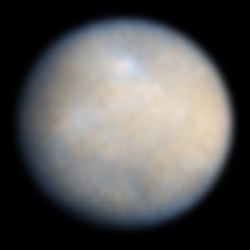Looking at what we know about asteroids, we can find that the size cutoff at which most bodies appear highly spherical is fairly close to the point where their internal pressure approaches 1 Earth atmosphere. Because of this, it would be tempting to imagine that an asteroid's material strength may be nearly sufficient to maintain an atmosphere. There are a few hazards with that argument, but the main takeaway is that it's not necessary. Basically, self-gravitation is more useful than tensile strength because we have no reason to believe that an asteroid's natural tensile strength is reliable. There are more complicated arguments involving the role of compressive strength, but I'll get into those with a later post.
Abundance of Irregular Asteroids by Pictures
Here are a few examples of asteroids at different scales that we have pictures of. There is a combined imgage out there which preserves the length scale, although this isn't as useful as just looking at the images side-by-side, since I'm interested in their degree of irregularity.
| Picture | Name | M (kg) | Center Pressure due to self-gravity (in Earth atmospheres) | Type |
|---|---|---|---|---|
|
| 1 Ceres | 9.4 x 1020 | 221 | spherical |
|
| 4 Vesta | 2.6 x 1020 | 185 | borderline |
| 21 Lutetia | 1.7 x 1018 | 6.3 | irregular | |
|
| 253 Mathilde | 1 x 1017 | 0.27 | somewhat spherical |
|
| 243 Ida | 4.0 x 1016 | 0.36 | irregular |
|
| 951 Gaspra | 2.0 x 1016 | 0.24 | irregular |
| 433 Eros | 7.0 x 1015 | 0.12 | irregular | |
| 2867 Steins | 1.0 x 1014 | 0.0032 | irregular | |
| 4179 Toutatis | 5.0 x 1013 | 0.0027 | somewhat spherical | |
| 25143 Itokawa | 3.0 x 1010 | 2.0 x 10-5 | irregular |
There is somewhat a deficit of information beyond this. If you want to see more pictures of asteroids (like I do), you might be out of luck, because almost every one of the pictures above represents a major space exploration mission. There's also a pronounced deficit of information for Earth-like center pressures, since the above tables skips over an order of magnitude between Mathilde and Lutetia.
Note that pressure doesn't follow directly from mass. This is because the objects have different densities, and I used those when calculating the center pressure. A lower density will result in a lower central pressure, even for the same total mass. That is simply a quirk of self-gravitation.
Once we get to the extremely small bodies, they seem to commonly take on the shape of an prolate spheroid. Beyond one Earth atmosphere, the bodies all seem to conform to a roughly spherical envelope, even though there are a lot of irregularities on the surface.
For those small bodies, it's interesting to note that the speed of rotation also puts a limit on the amount of material stress we could expect from them. A list of fastest rotating objects shows that some have a rotation on the order of a minute, but these are all several meters in diameter.
Largest Bodies Identified Irregular
Another reference for this is the Wikipedia list of solar system objects by size. I went through that table and grabbed the largest objects that were identified as irregular. This is a good approach because it gives a mass figure below which irregular objects start to appear is large number. However, its major shortcoming is that we have no idea how many corresponding regular bodies exist around their mass scale.
| Object | M (kg) | Shape |
|---|---|---|
| Proteus (moon) | 5.0 x 1019 | irregular |
| Nereid (moon) | 3.1 x 1019 | irregular |
| 52 Europa | 1.7 x 1019 | irregular |
| Davida | 4.4 x 1019 | irregular |
| Sylvia | 1.5 x 1019 | irregular |
| Cybele | 1.8 x 1019 | irregular |
Reasonable accounting would put the limit for irregularity at somewhere between 1017 and 1019 kg. However, the limit I've found for a habitable inner pressure is around 1016, and can even be lower than that. Engineering limits are still more complicated. Even though bodies in this size range are irregular, they're still roughly spherical in many cases, indicating that material strength doesn't hold up on the scale of self-gravitational forces. Within the size range we're interested in, the bodies are showing that they withstand some deformation against the equipotential criteria, but exactly how much is unclear.
This evidence does give a clear message - that using an asteroid to hold breathable air would involve both self-gravitation forces, as well as some material pushback.


_mathilde.jpg/275px-(253)_mathilde.jpg)





No comments:
Post a Comment